The mid-range mainstream graphics card market has become very exciting with the launch of the GeForce RTX 5070 from Nvidia and the Radeon RX 9070 from AMD. These graphics cards are priced very closely, and the performance is relatively evenly matched. Although these cards are capable of 4K gaming (with some graphics settings lowered), they are best suited for super-fast 1080p and 1440p gaming. They come with new features, support new technology, and are very power efficient. The main competitors of these cards from the previous generations are RTX 4070 SUPER and RTX 4070 Ti. So, I will compare these cards on important parameters to help you decide the best mid-range graphics card for your gaming or work requirements.
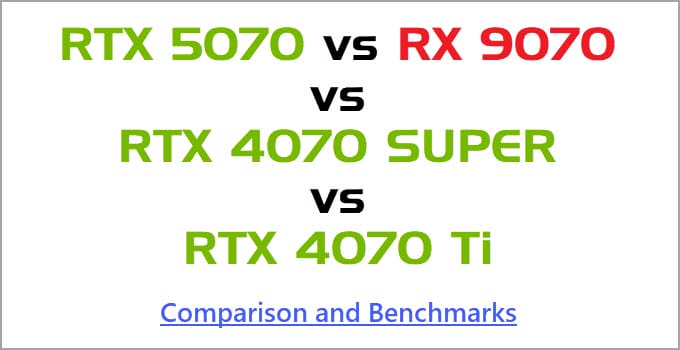
RTX 5070 vs RX 9070 vs RTX 4070 SUPER vs RTX 4070 Ti Comparison and Benchmarks
Below is a comparison between RTX 5070, RX 9070, RTX 4070 SUPER, and RTX 4070 Ti graphics cards based on their specifications, gaming performance, pricing, power consumption, and features.
GPU Architecture
GeForce RTX 5070 is built on Nvidia’s Blackwell GPU architecture on a 5nm manufacturing process. It uses GB205 GPU chip and has 6144 CUDA Cores, 48 RT Cores (4th Generation), and 192 Tensor Cores (5th Generation).
Radeon RX 9070 is built on AMD’s latest RDNA 4 architecture on a smaller 4nm fabrication process. It uses Navi 48 XT chip and has 3584 Stream Processors, 56 Ray Accelerators, and 112 AI Accelerators.
RTX 4070 SUPER is built on the Ada Lovelace architecture on a 5nm fabrication process. It uses AD104 chip in a slightly lower configuration and comes with 7168 CUDA Cores, 56 RT Cores (3rd Generation), and 224 Tensor Cores (4th Generation).
RTX 4070 Ti is also built on the Ada Lovelace GPU architecture with a 5nm manufacturing process. It uses AD104 GPU chip and has 7680 CUDA Cores, 60 RT Cores (3rd Generation), and 240 Tensor Cores (4th Generation).
| RTX 5070 | RX 9070 | RTX 4070 SUPER | RTX 4070 Ti | |
| GPU Chip | GB205 | Navi 48 XT | AD104 | AD104 |
| GPU Architecture | Blackwell | RDNA 4 | Ada Lovelace | Ada Lovelace |
| Fabrication Process | 5nm | 4nm | 5nm | 5nm |
| CUDA Cores/Stream Processors | 6144 CUDA Cores | 3584 Stream Processors | 7168 CUDA Cores | 7680 CUDA Cores |
| RT Cores | 48 (4th Generation) | 56 Ray Accelerators | 56 (3rd Generation) | 60 (3rd Generation) |
| Tensor Cores / | 192 (5th Generation) | 112 AI Accelerators | 224 (4th Generation) | 240 (4th Generation) |
Video RAM [VRAM]
RTX 5070 comes with 12 GB GDDR7 memory with a 192-bit interface. The memory runs at 28 Gbps and generates a bandwidth of 672 GB/s. RX 9070 comes with 16 GB GDDR6 memory with a 256-bit interface and runs at 20 Gbps, delivering a bandwidth of 640 GB/s. The RX 9070 also has a 64 MB Infinity Cache, an ultra-fast memory cache that can provide a higher peak memory bandwidth for a short time.
RTX 4070 SUPER and RTX 4070 Ti come with the same memory configuration. They come with 12GB GDDR6X memory with a 192-bit interface. The memory speed is 21Gbps and generates a memory bandwidth of 504 GB/s.
| RTX 5070 | RX 9070 | RTX 4070 SUPER | RTX 4070 Ti | |
| Memory Size | 12 GB GDDR7 | 16 GB GDDR6 | 12 GB GDDR6X | 12 GB GDDR6X |
| Memory Interface | 192-bit | 256-bit | 192-bit | 192-bit |
| Memory Speed | 28 Gbps | 20 Gbps | 21 Gbps | 21 Gbps |
| Memory Bandwidth | 672 GB/s | 640 GB/s | 504 GB/s | 504 GB/s |
| Infinity Cache | NA | 64 MB | NA | NA |
Features
All these graphics cards are VR-ready and support DirectX 12, OpenGL 4.6, Vulkan, AV1 Encode/Decode, Real-Time Ray Tracing, and variable refresh rate technologies G-Sync/FreeSync. RTX 5070 and RX 9070 support PCIe 5.0 (Gen5), while RTX 4070 Ti and RTX 4070 SUPER support PCIe 4.0 (Gen4) interface. Regarding image upscaling technologies for increasing frame rate in games, RTX 5070 supports DLSS 4, RTX 4070 Ti and RTX 4070 SUPER supports DLSS 3, while RX 9070 supports AMD FidelityFX Super Resolution (FSR 4).
Regarding video output ports, the RTX 5070 supports DisplayPort 2.1b and HDMI 2.1b, the RX 9070 supports DisplayPort 2.1a and HDMI 2.1b, and the RTX 4070 Ti and RTX 4070 SUPER support HDMI 2.1a but do not support DisplayPort 2.1.
| RTX 5070 | RX 9070 | RTX 4070 SUPER | RTX 4070 Ti | |
| Bus Interface | PCI Express 5.0 | PCI Express 5.0 | PCI Express 4.0 | PCI Express 4.0 |
| DirectX | 12 Ultimate | 12 Ultimate | 12 Ultimate | 12 Ultimate |
| OpenGL | 4.6 | 4.6 | 4.6 | 4.6 |
| Vulkan | 1.4 | 1.3 | 1.3 | 1.3 |
| SLI / CrossFire | NA | NA | NA | NA |
| VR Ready | Yes | Yes | Yes | Yes |
| G-Sync/FreeSync | Yes | Yes | Yes | Yes |
| HDMI 2.1 | HDMI 2.1b | HDMI 2.1b | HDMI 2.1a | HDMI 2.1a |
| DisplayPort 2.1 | DisplayPort 2.1b | DisplayPort 2.1a | No | No |
| AV1 Support (Encode/Decode) | Yes | Yes | Yes | Yes |
| Real-Time Ray Tracing | Yes | Yes | Yes | Yes |
| Deep Learning Super Sampling (DLSS) | Yes (DLSS 4) | NA | Yes (DLSS 3) | NA |
| FidelityFX Super Resolution (FSR) | NA | AMD FSR4 | NA | FSR 3 |
Gaming Performance
Here are the gaming benchmarks of these cards at 1440p resolution in various latest AAA games.
1440p Gaming Benchmarks
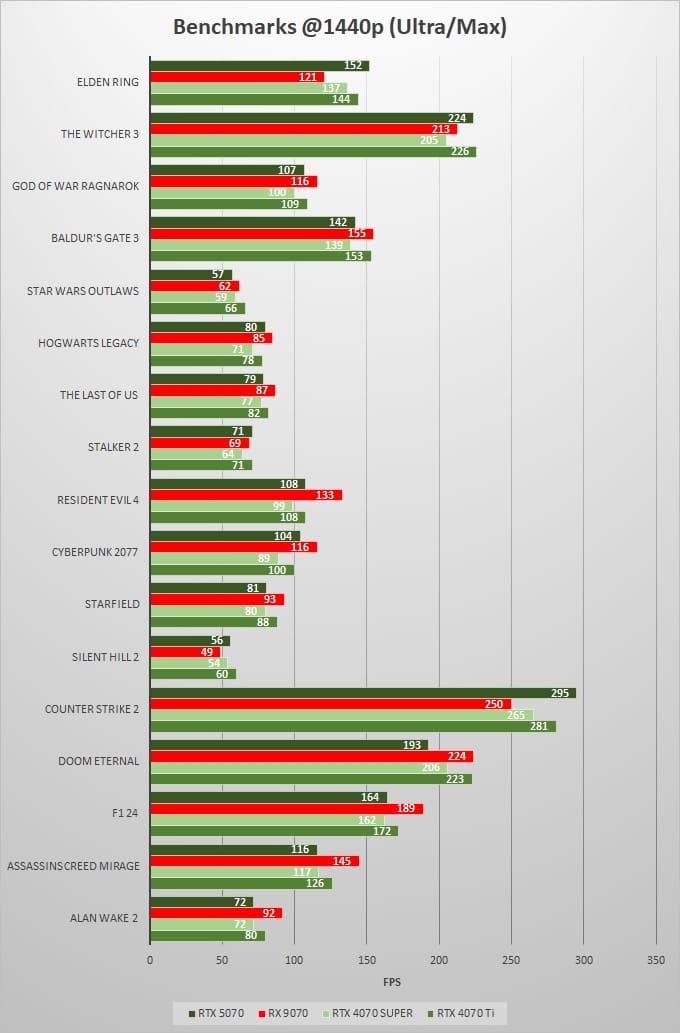
The above gaming benchmarks show that on average, RX 9070 is 5 percent faster than RTX 5070. Comparing RTX 5070 with older RTX generations, RTX 5070 is 5 percent faster than RTX 4070 SUPER and only 3 percent slower than RTX 4070 Ti. RX 9070 is the most powerful of all cards and is around 3 percent faster than RTX 4070 Ti.
Ray Tracing Performance
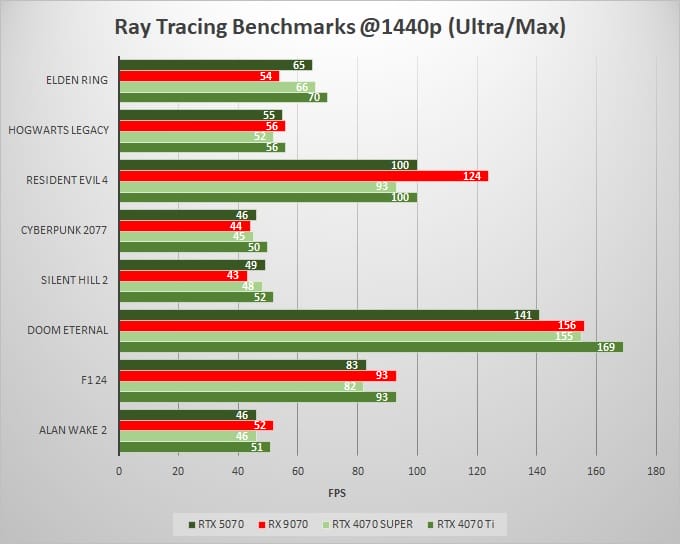
In Ray Tracing performance, RTX 4070 Ti is at the top, around 13 percent faster than RX 9070 and 8 percent faster than RTX 5070. RTX 5070 is around 4 percent faster than RX 9070 in Ray tracing.
Power Consumption
RX 9070 and RTX 4070 SUPER have the lowest power consumption at 220W, while the RTX 5070’s power consumption is second lowest at 250W. RTX 4070 Ti has the highest power consumption at 285W.
| RTX 5070 | RX 9070 | RTX 4070 SUPER | RTX 4070 Ti | |
| Power Connector | 16-pin 12V-2×6 HPWR | 8-pin PCIe (x 2) | 16-pin 12VHPWR | 16-pin 12V-2×6 HPWR |
| Power Consumption | 250W | 220W | 220W | 285W |
| Recommended PSU | 650W | 650W | 650W | 700W |
Pricing & Availability
The official MSRP for RTX 5070 and RX 9070 is 549 USD, while that of RTX 4070 SUPER is 599 USD and 799 USD for RTX 4070 Ti. The custom models of these cards may cost more, and you can check the latest prices and different custom models from the links below.
Check RTX 5070 Price on Amazon
Check RTX 4070 SUPER Price on Amazon
Check RTX 4070 Ti Price on Amazon
RTX 5070 vs RX 9070 vs RTX 4070 SUPER vs RTX 4070 Ti Specifications
| RTX 5070 | RX 9070 | RTX 4070 SUPER | RTX 4070 Ti | |
| GPU Chip | GB205 | Navi 48 XT | AD104 | AD104 |
| GPU Architecture | Blackwell | RDNA 4 | Ada Lovelace | Ada Lovelace |
| Fabrication Process | 5nm | 4nm | 5nm | 5nm |
| CUDA Cores/Stream Processors | 6144 CUDA Cores | 3584 Stream Processors | 7168 CUDA Cores | 7680 CUDA Cores |
| Ray Tracing Cores | 48 (4th Generation) | 56 Ray Accelerators | 56 (3rd Generation) | 60 (3rd Generation) |
| Tensor Cores | 192 (5th Generation) | 112 AI Accelerators | 224 (4th Generation) | 240 (4th Generation) |
| Memory Size | 12 GB GDDR7 | 16 GB GDDR6 | 12 GB GDDR6X | 12 GB GDDR6X |
| Memory Interface | 192-bit | 256-bit | 192-bit | 192-bit |
| Memory Speed | 28 Gbps | 20 Gbps | 21 Gbps | 21 Gbps |
| Memory Bandwidth | 672 GB/s | 640 GB/s | 504 GB/s | 504 GB/s |
| Bus Interface | PCI Express 5.0 | PCI Express 5.0 | PCI Express 4.0 | PCI Express 4.0 |
| DirectX | 12 Ultimate | 12 Ultimate | 12 Ultimate | 12 Ultimate |
| OpenGL | 4.6 | 4.6 | 4.6 | 4.6 |
| Vulkan | 1.4 | 1.3 | 1.3 | 1.3 |
| SLI / CrossFire | NA | NA | NA | NA |
| VR Ready | Yes | Yes | Yes | Yes |
| G-Sync/FreeSync | Yes | Yes | Yes | Yes |
| Power Consumption | 250W | 220W | 220W | 285W |
| Recommended PSU | 650W | 650W | 650W | 700W |
Final Words
RTX 5070 and RX 9070 are excellent mid-range cards capable of 4K gaming. Both cards are priced similarly, and the performance is almost identical. RX 9070 is slightly faster than RTX 5070 and has an extra 4GB VRAM that will come in handy for 4K gaming and upcoming games with larger VRAM requirements (even at 1080p resolution). The power consumption of both cards is almost the same, and most of their models are pretty compact, making them an excellent choice for SFF systems. If you have any queries or want to share your opinion, please let me know in the comment section below.
(*This post may contain affiliate links, which means I may receive a small commission if you choose to purchase through the links I provide (at no extra cost to you). Thank you for supporting the work I put into this site!)
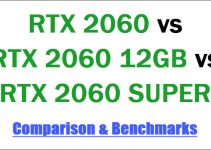
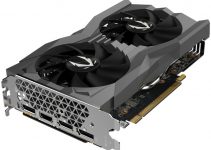
![Best RX 6500 XT Cards for 1080p Gaming [SFF & Budget Models] Best RX 6500 XT Cards for 1080p Gaming [SFF & Budget Models]](https://graphicscardhub.com/wp-content/uploads/2022/03/PowerColor-Fighter-Radeon-RX-6500-XT-211x150.jpg)